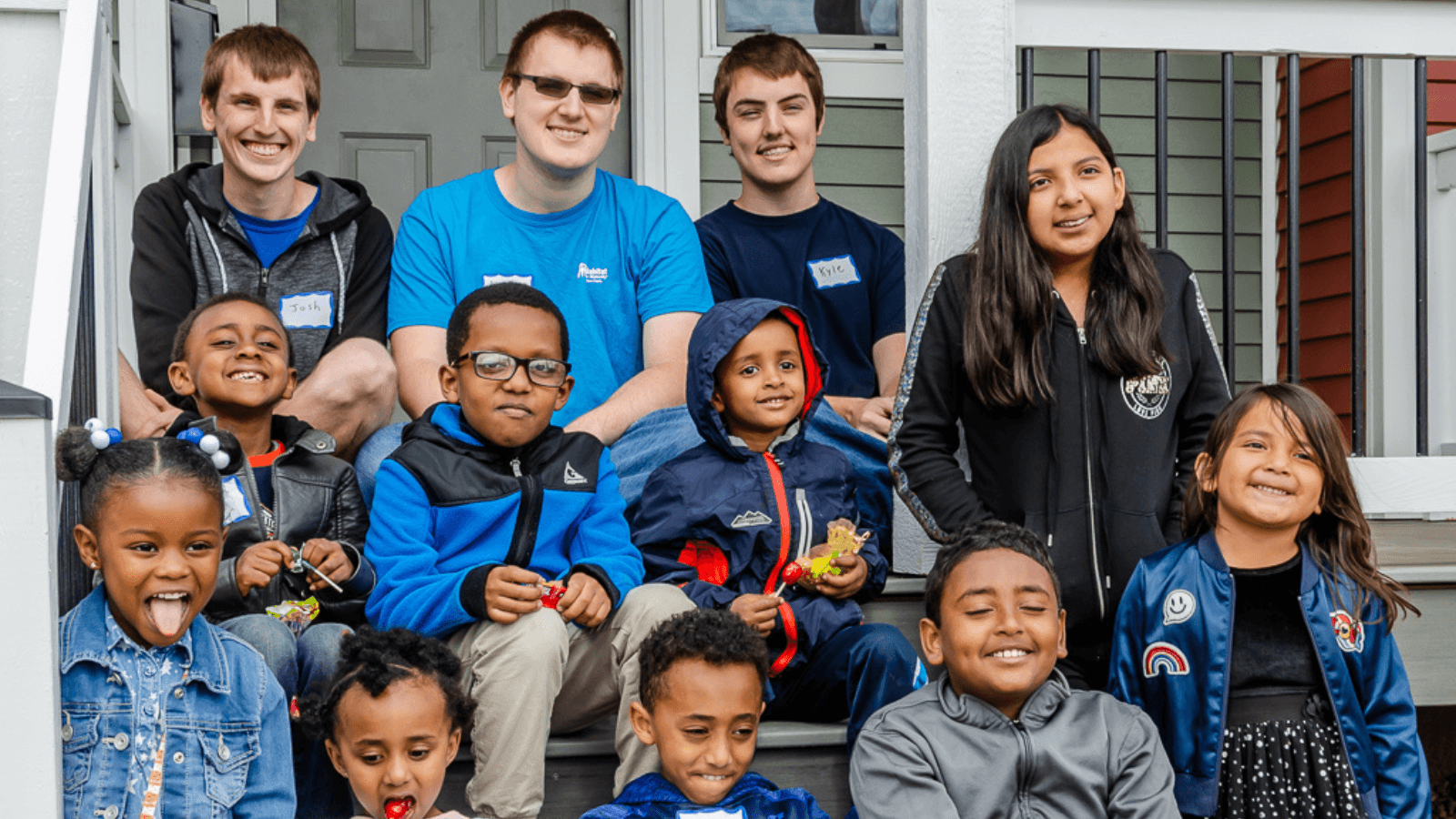
If there is a business or organizational moral to this short reflection, it is this: decisions made for the long-term health and welfare of people tend to also be climate friendly.
In 2006, Habitat for Humanity of Kent County, Michigan built the first LEED certified affordable home in the nation. In the following years, the organization has built or restored over 200 certified homes, most at the gold level.
The decision to build to this level was a natural progression, not a major turning point. Habitat Kent construction photos from the early 1990s show many homes were built with insulation practices and levels that are considered a stretch for many builders, even today.
I’ve talked to some of the people who made those decisions, and I think it is safe to say that their motivation was financially based. That is, they made the decision based on the financial health of the families Habitat serves. I’ve heard different versions of the following many times: “A home isn’t truly affordable if you can’t pay the utility bills.”
Historically, the average duration of homeownership for an American family is about seven to eight years. Then, it is off to another house, upgrading or downsizing, depending on the case. Consequently, most builders must focus their efforts on the first sale and pay attention to finishes. Nice countertops will sell a house much faster than insulation or airtightness.
Habitat families tend to stay in their homes for much longer periods and, consequently, will more fully experience the benefits, or the brunt, of the decisions made for them regarding their home’s efficiency.
The LEED certification process requires testing on each home we build and the results tell a compelling story. The annual utility cost savings of Habitat Kent homes since 2006, based on modeling, averages about $288. So, 200 homes x $288 yearly savings x 25 years of mortgage, means that over the course of those mortgages, Habitat Kent families will save a collective $1.4 million.
The variables for these models compare the way we build versus the way we could have built them. The savings that come from the decisions we make stay with the families we serve. It stays in their neighborhoods and in their children’s health, education, and futures.
Interestingly, Habitat Kent’s continued commitment to well insulated and sealed homes means that we can more easily shift to all-electric homes with high-efficiency heat pumps that continue the financial savings and provide a more comfortable and healthy home.
God’s good creation and its climate are other beneficiaries of this long-term decision making; the less energy a home consumes, the fewer greenhouse gasses will make their way into the atmosphere. Partnering with Habitat Kent, Calvin University engineering students calculated that the electric heat pumps mentioned above are responsible for 22% less carbon emissions than a similar house equipped with a high-efficiency gas furnace, even on today’s fossil-fuel-powered grid.
The importance of this was brought home to me at the dedication of a small condominium project built by Habitat Kent. All the children who would soon call this their home were gathered together for a photo.
It was beautiful. All the children were beaming with joy and expectation. For them, their present and future were about to change for the better.
When viewing the picture, I realized that these children had the potential to have their own families by 2050, and several of them should be here to bring in the new century in 2100. It made me realize the future is upon us, and it made me proud that their family’s health and wellbeing, as well as that of God’s world, was made a lot better by a few simple decisions at the beginning of their home’s construction.
……………
What Can I Do?
Thanks to recent clean energy benefits included in the Inflation Reduction Act, homeowners can pursue improvements that cut down on emissions while increasing efficiency and saving money! Check out our benefits calculator to see how much you could receive in benefits and see Mark’s previous blog for an example of what home efficiency improvements can look like for your home.
Want more information? Read “A Consumer Guide to the Inflation Reduction Act” from NRDC.
Mark Ogland-Hand is the Senior Donor Relations Specialist with Habitat for Humanity Kent County in Michigan.






